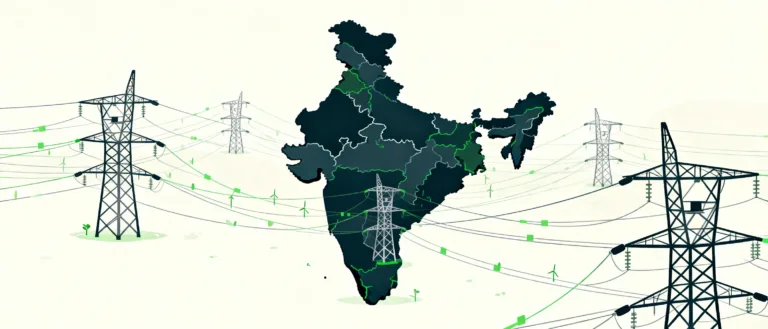Key Insights
- African fintech startups are diversifying beyond payments into health insurance, smartphone financing, and instant credit services to unlock new revenue streams
- Nigerian unicorn Moniepoint raised $90 million and launched UK-Africa remittance products, while regional players expand across multiple countries and services
- The sector raised $2.65 billion in the first ten months of 2025—a 56% increase from 2024—signaling sustained investor confidence in Africa’s digital finance opportunity
African Fintech Startups Chart New Growth Paths Across the Continent
African fintech startups are no longer content with being payment processors. By late 2025, the region’s most ambitious digital finance companies are pursuing aggressive expansion strategies that combine geographic reach with product diversification, positioning themselves as comprehensive financial services platforms rather than single-use applications.
This evolution reflects both market maturity and surging investor confidence. African tech startups raised $2.65 billion in the first ten months of 2025 alone—a 56% jump from the previous year. Fintech continues to dominate this capital influx, though investors increasingly view the sector not as a niche payments play but as foundational infrastructure enabling broader economic transformation across the continent.
Expanding Beyond Payments: New Service Frontiers
Nigeria’s PalmPay exemplifies this evolution. The digital wallet platform, which processes 15 million daily transactions in Africa, recently enrolled one million users in its new health insurance feature. This move into insurance represents a critical shift—
fintech platforms are now bundling financial services to increase customer lifetime value and deepen engagement.
PalmPay’s health insurance launch signals a broader trend: African fintechs are recognizing that financial inclusion extends beyond access to payments. By offering complementary services like insurance and credit, these platforms can address fragmented needs that traditionally required multiple providers. The company plans to introduce additional insurance products, positioning itself as a one-stop financial services hub for underbanked populations.
Similarly Wave, the Senegal-based fintech, is pursuing a different but complementary strategy. The platform is exploring partnerships with West African banks to offer loans, effectively bridging the gap between informal digital finance and traditional banking infrastructure. This partnership model allows Wave to leverage existing regulatory relationships while expanding its product suite without bearing the full compliance burden of becoming a bank.
Meanwhile, Egypt’s MNT-Halan has introduced instant credit against app investments—a mechanism that transforms user assets within the platform into collateral for immediate borrowing. This innovation addresses a critical pain point:
Africans with limited traditional credit histories can now access liquidity based on their demonstrated financial behavior within the app.
Smartphone Financing Emerges as Gateway Product
One of the most significant trends is the emergence of smartphone financing as a lead product for market entry. M-Kopa, with approximately $400 million in annual revenue, serves 5 million underbanked Africans by offering smartphones and other productive assets through flexible digital micropayments. This model addresses a fundamental constraint: in markets where smartphone penetration remains below 50%, financing devices becomes a gateway to digital financial services.
The logic is straightforward. A smartphone is both a consumption good and a productive asset. By offering flexible payment terms, fintech platforms enable users to access devices they couldn’t otherwise afford, which simultaneously onboards them into digital finance ecosystems. Once users have smartphones and are familiar with mobile financial applications, they become addressable for insurance, loans, and investment products.
Cross-Border Remittances and Regional Consolidation
Nigerian unicorn Moniepoint’s recent $90 million funding round reflects investor confidence in fintech’s ability to scale across borders. The company recently launched a UK-Africa remittance product, tapping into one of Africa’s most valuable financial flows. Remittances to Africa exceeded $60 billion annually in recent years, with traditional corridors like Nigeria-UK commanding premium pricing due to inefficient intermediaries.
By building direct UK-Africa remittance capabilities, Moniepoint is capturing value that previously flowed to Western Union and MoneyGram. This move also positions the company for potential expansion into other diaspora corridors—US-Africa, Europe-Africa, and Gulf-Africa—where similar inefficiencies persist.
Investor Capital Sustains Momentum
The capital flowing into African fintech reflects recognition that the sector has moved beyond hype. African startups raised $441.9 million in October 2025 across 59 deals, surging 217% from September. While not all of this capital targets fintech, the sector remains the largest recipient of venture investment on the continent.
SaaS funding surged 430% in September alone, with global capital now prioritizing Africa’s proven innovation engine, but fintech’s sustained performance—with companies like PalmPay demonstrating 583.6% CAGR since 2020—continues to attract institutional capital from venture firms and development finance institutions.
Market Dynamics Driving Expansion
Several structural factors enable this fintech expansion. First, Africa’s demographic profile—with over 60% of the population under 25 years old—creates a massive addressable market of digitally native consumers who have never used traditional banking. Second, infrastructure advances like Viasat’s ViaSat-3 constellation set to deliver high-speed, low-cost internet to 5 million Africans by 2025 are removing connectivity constraints that previously limited digital finance adoption.
Third, regulatory environments are evolving. Nigeria’s digital innovation incentives and Rwanda’s tech-friendly regulatory sandbox have created policy frameworks that reduce friction for fintech experimentation. This regulatory clarity attracts not just local entrepreneurs but also global players seeking African expansion opportunities.
The Competitive Landscape
The fintech expansion is not occurring in isolation. Moove, the Uber-backed African mobility fintech valued at $750 million with $115 million in annual revenue, offers vehicle financing to over 20,000 ride-hailing and delivery app drivers. This vertical integration—combining mobility services with financing—demonstrates how fintech is becoming embedded across Africa’s digital economy.
The competition is intensifying, but the market remains large enough to accommodate multiple winners. Ten African fintech startups have been included in the 2025 list of the world’s 300 leading fintech firms, indicating that African companies are now competing on a global stage rather than being confined to regional markets.
What This Means for Financial Inclusion
The expansion of African fintech beyond payments into insurance, credit, and investment products has profound implications for financial inclusion. Traditional banking infrastructure in Africa remains concentrated in urban centers and accessible primarily to salaried employees. Fintech platforms, by contrast, operate in mobile-first, data-light environments that can serve informal workers, small traders, and rural populations.
When these platforms bundle services—combining payments with insurance, credit, and investment tools—they create comprehensive financial ecosystems that address the full spectrum of user needs. A trader can now receive payments, access working capital credit, insure inventory, and invest savings—all through a single application.
However, challenges remain. The transition from seed to Series A funding remains a significant hurdle for African fintech startups, indicating that while early-stage capital is abundant, growth-stage funding remains constrained. This creates pressure on fintech platforms to achieve profitability quickly and demonstrate unit economics that justify larger rounds.
Looking Ahead
As African fintech startups pursue these new growth paths, the sector is transitioning from a venture-backed experiment to a core component of the continent’s financial infrastructure. The companies leading this charge—PalmPay, Wave, Moniepoint, M-Kopa, and others—are not simply replicating Western fintech models. Instead, they are building platforms explicitly designed for African market conditions: low smartphone penetration, limited traditional credit histories, informal economies, and cross-border payment needs.
The $2.65 billion raised in 2025 represents validation that this approach works. As these platforms expand geographically and add services, they will increasingly compete for the same customers, driving innovation and forcing efficiency improvements. For African consumers, this competition translates into better products, lower costs, and expanded access to financial services that were previously unavailable.
For investors and entrepreneurs watching the African fintech space, the message is clear: the sector has moved beyond the hype cycle. What remains is execution—scaling platforms across multiple countries, adding services that generate sustainable unit economics, and building defensible competitive advantages in markets where regulatory frameworks are still evolving.
Join the conversation about African fintech and tech innovation. Connect with industry experts and fellow tech enthusiasts on WireUnwired Research on WhatsApp or engage with our community on LinkedIn for daily tech news and analysis.
Discover more from WireUnwired Research
Subscribe to get the latest posts sent to your email.




